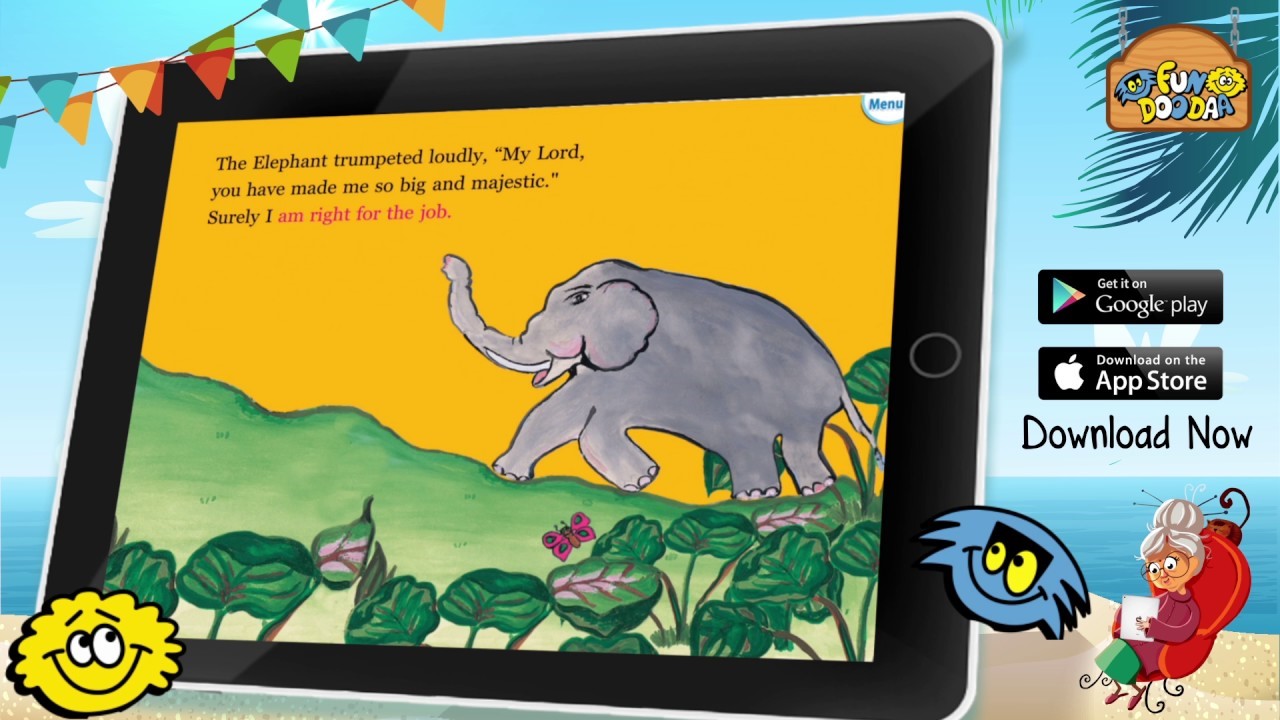Children’s Perspective on Digital Picure Book: A Brief Analysis
Main Article Content
Abstract
Early exposure to symbolic media, such as pictures, drawings, paintings, photos, and videos, is common in western countries. Modern picture books coexist with electronic storybooks and other digital literature, expanding the environment in which young children develop and learn. Since the advent of new technologies, recommendations for kids' use of these gadgets have been covered in numerous papers. Young children and adults can engage in social interaction through picture books, which creates a wonderful chance for learning and teaching. This paper makes an analysis on children’s digital story book reading behavior. Initially, the features (considered questions) are clustered using k means clustering model. In order to analyze the children’s digital story book reading behavior, the questions are made on different drivers such as (i) Characteristics of story book, (ii) Interaction level and (iii) Child learning ability level. The questions are analyzed based upon the responses obtained from 100 respondents with 46 males and 54 females. Here, the study is done using ANOVA, regression analysis along with MSE, correlation and variance computation. Based upon the clustering outputs, the regression analysis is made on correlation and covariance metrics.
Article Details
References
I.Y. Maureen, H. van der Meij, & T. de Jong, “Enhancing Storytelling Activities to Support Early (Digital) Literacy Development in Early Childhood Education,” IJEC, vol.52, pp.55–76, 2020. https://doi.org/10.1007/s13158-020-00263-7
N. Matthew, S. Clow, “Putting disabled children in the picture: Promoting inclusive children’s books and media,” IJEC, vol.39, pp.65, 2007. https://doi.org/10.1007/BF03178225
G. Raynaudo, O. Peralta, “Children learning a concept with a book and an e-book: a comparison with matched instruction,” Eur J Psychol Edu, vol. 34, pp.87–99, 2019. https://doi.org/10.1007/s10212-018-0370-4
B.H. Kim, D.I. Kim, “Development of Children’s Story Production System for Children Creativity Improvement,” Wireless Pers Commun, vol.98, pp.3195–3210, 2018. https://doi.org/10.1007/s11277-017-5048-8
Z.C. ?im?ek, N. I??ko?lu Erdo?an, “Comparing the effects of different book reading techniques on young children’s language development,” Read Writ., vol.34, pp.817–839, 2021. https://doi.org/10.1007/s11145-020-10091-9
M. Zipke, “Preschoolers explore interactive storybook apps: The effect on word recognition and story comprehension,” Educ Inf Technol, vol.22, pp.1695–1712, 2017. https://doi.org/10.1007/s10639-016-9513-x
K. Zhang, E. Djonov, & J. Torr, “Reading and Reinterpreting Picture Books on Children’s Television: Implications for Young Children’s Narrative Literacy,” Child Lit Educ., vol.47, pp.129–147, 2016. https://doi.org/10.1007/s10583-015-9259-x
D. Altun, “The Efficacy of Multimedia Stories in Preschoolers’ Explicit and Implicit Story Comprehension,” Early Childhood Educ J., vol.46, pp.629–642, 2018. https://doi.org/10.1007/s10643-018-0916-8
O. Korat, M. Tourgeman, & O. Segal-Drori, “E-book reading in kindergarten and story comprehension support,” Read Writ, vol.35, pp.155–175, 2022. https://doi.org/10.1007/s11145-021-10175-0
N. Kucirkova, Y. Toda, & R. Flewitt, “Young Children’s Use of Personalized Technologies: Insights From Teachers and Digital Software Designers in Japan,” Tech Know Learn., vol.26, pp.535–554, 2021. https://doi.org/10.1007/s10758-020-09465-3
E. Smith, A. Constantin, H. Johnson, et al., “Digitally-Mediated Social Stories Support Children on the Autism Spectrum Adapting to a Change in a ‘Real-World’ Context,” J Autism Dev Disord, vol.51, pp.514–526, 2021. https://doi.org/10.1007/s10803-020-04558-5
N. Pistoljevic, V. Hulusic, “Educational e-book for children with and without developmental disorders,” J. Comput. Educ., vol.6, pp.117–141, 2019. https://doi.org/10.1007/s40692-018-0126-9
Volodina, “Home learning environment and out-of-home activities: their relations to prosocial behaviour and peer relationships in primary school children,” Curr Psychol, 2022. https://doi.org/10.1007/s12144-022-03410-6
Shamir, O. Korat, & R. Fellah, “Promoting vocabulary, phonological awareness and concept about print among children at risk for learning disability: can e-books help?,” Read Writ, vol.25, pp.45–69, 2012. https://doi.org/10.1007/s11145-010-9247-x
K.C. Wu, Y.M. Tang, & C.Y. Tsai, “Graphical interface design for children seeking information in a digital library,” Vis. in Eng., vol. 2, pp.5, 2014. https://doi.org/10.1186/2213-7459-2-5
P. Rai, M. Fleer, & G. Fragkiadaki, “Theorising Digital Tools: Mutual Constitution of the Person and Digital in a Conceptual PlayWorld,” Hu Arenas, 2021. https://doi.org/10.1007/s42087-020-00178-8
M.M. Neumann, “Social Robots and Young Children’s Early Language and Literacy Learning,” Early Childhood Educ J, vol.48, pp.157–170, 2020. https://doi.org/10.1007/s10643-019-00997-7
S.H. Lee, “Learning vocabulary from e-book reading and recorded word explanation for low-income elementary students with and without reading difficulties,” Read Writ., vol.33, pp.691–717, 2020. https://doi.org/10.1007/s11145-019-09983-2
O. Korat, A. Shamir, & L. Arbiv, “E-books as support for emergent writing with and without adult assistance,” Educ Inf Technol., vol.16, pp.301–318, 2011. https://doi.org/10.1007/s10639-010-9127-7
L. Guanio-Uluru, “Analysing Plant Representation in Children’s Literature: The Phyto- Analysis Map,” Child Lit Educ., 2021. https://doi.org/10.1007/s10583-021-09469-2
E.M. Hoiem, “The Progress of Sugar: Consumption as Complicity in Children’s Books about Slavery and Manufacturing,” Child Lit Educ., vol.52, pp.162–182, 2021. https://doi.org/10.1007/s10583-020-09411-y
L. Thomas, E. Farrow, M. Aylett, et al., “A life story in three parts: the use of triptychs to make sense of personal digital data,” Pers Ubiquit Comput., vol.22, pp.691–705, 2018. https://doi.org/10.1007/s00779-018-1110-0.
C.C. Liu, C.Y. Yang, & P.Y. Chao, “A longitudinal analysis of student participation in a digital collaborative storytelling activity,” Education Tech Research Dev, vol.67, pp.907–929, 2019. https://doi.org/10.1007/s11423-019-09666-3
B.Y. Lee, “Facilitating Reading Habits and Creating Peer Culture in Shared Book Reading: An Exploratory Case Study in a Toddler Classroom,” Early Childhood Educ J., vol.45, pp.521–527, 2017. https://doi.org/10.1007/s10643-016-0782-1
J. Cassell, K. Ryokai, “Making Space for Voice: Technologies to Support Children’s Fantasy and Storytelling,” Personal Ub Comp, vol.5, pp.169–190, 2021. https://doi.org/10.1007/PL00000018
E. Park, M. Forhan, & C.A. Jones, “The use of digital storytelling of patients’ stories as an approach to translating knowledge: a scoping review,” Res Involv Engagem, vol.7, pp.58, 2021. https://doi.org/10.1186/s40900-021-00305-x
K. Huth, R. Brown, & W. Usher, “The use of story to teach religious education in the early years of primary school: a systematic review of the literature,” j. relig. educ., vol.69, pp.253–272, 2021. https://doi.org/10.1007/s40839-021-00140-y
M.L. Harju, D. Rouse, “Keeping Some Wildness Always Alive: Posthumanism and the Animality of Children’s Literature and Play,” Child Lit Educ., vol.49, pp.447–466, 2018. https://doi.org/10.1007/s10583-017-9329-3.
Li Wenchao, Z. Yong, and X. Shixiong, “A Novel Clustering Algorithm Based on Hierarchical and K-means Clustering,” 2007 Chinese Control Conference, pp.605-609, 2007. doi: 10.1109/CHICC.2006.4347538.

